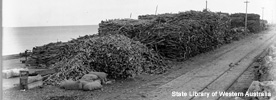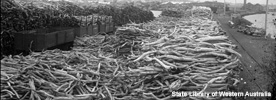|
Santalum is a prized gift of the plant kingdom woven
into the culture and heritage, it is one of the most
valuable trees in the world. It is a small to
medium-sized hemiparasitic tree, distributed rather
widely in the world.
For more than 5000 years, India has been the traditional
leader of sandalwood oil production for perfumery and
pharmaceuticals. The aroma of the oil and the wood is
esteemed by people belonging to three major religions of
the world – Hinduism, Buddhism and Islam.
Sandalwood has been used for thousands of years in
traditional Chinese, Ayurvedic and Australian Aboriginal
medicine to treat conditions like stress, insomnia,
eczema and acne. Buddhist monks inhaled Sandalwood
before meditation and Australian Aborigines used the
scent to relax and focus before walkabout.
Sandalwood was traditionally used in the medicine, and
burnt as an insect repellent; it is rarely used nowadays
because of its scarcity and cash value. Heartwood from
sandalwood trees yields an aromatic oil. The oil was
traditionally used to a limited extent to scent coconut
oil (for application to the hair and body). Today, the
oil is widely valued and has been the basis of a
lucrative and exploitative trade for hundreds of years.
According to Vamana Purana, the wood is recommended for
worshiping God Shiva. Goddess Lakshmi is believed to
reside in the sandalwood tree (Brahma Vaivarta Purana).
The ancient Egyptians imported the wood and used it in
medicine, for embalming the dead and in ritual burning
to venerate the gods.
 
Australia Sandalwood
History
In the 1840s, sandalwood was Western Australia’s
biggest export earner. With tonnes of the wood sent to
China each year to produce incense for Buddhist worship.
1845 Western Australian sandalwood (Santalum Spicatum)
was the year Western Australia’s first export of
Sandalwood left its pristine shores. Bound for the far
east, this valuable and revered wood was to become a
great industry for Western Australia. Between 1892 and
1901 more than 50,000 tonnes were exported from Western
Australia with nearly all this wood derived from the
wheat belt as agricultural country was opened up.
Oil was distilled for the first time in 1875, and by
the turn of the 20th century, production of Australian
sandalwood oil was intermittent.
It was in the 1920’s that the Sandalwood harvests
peaked with over 14,000 tonnes harvested to meet the
strong Chinese demand for the wood. This prompted
the Western Australian Government to pass a legislation
to limit harvests at a sustainable level. This
legislation continues today.
However, in the late 1990s, Western Australian
sandalwood oil enjoyed a revival and by 2009 had peaked
at more than 20,000 tonnes per year – much of which went
to the fragrance industries in Europe. Although overall
production has decreased, by 2011 a significant
percentage of its production was heading to the chewing
tobacco industry in India alongside Indian sandalwood –
the chewing tobacco market being the largest market for
both oils in 2012.
 
Back
|